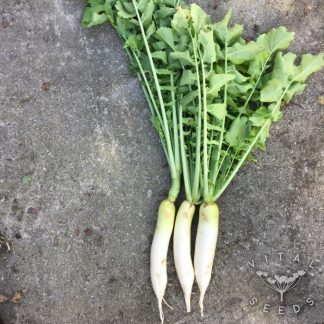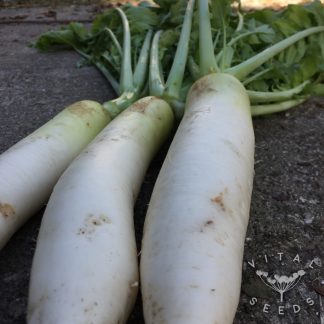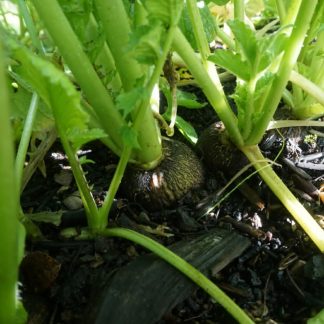How to grow Daikon Radish
Download PDF


Seed Sowing
Direct sow from June – September. Plant seeds 2 cm deep in rows around 30 cm apart, sow seeds every 15 cm. Seeds should germinate fast in warm weather. Sow into well-draining soil that isn’t too compacted.
Transplanting
Sow in modules, one seed per cell. Transplant into their final growing position 15cm apart after 3-4 weeks.
Plant Care
Keep them weed-free and watered during hot spells; lack of water can make them bolt and go woody. Too much water is also best avoided as it can cause the roots to split. You can mulch around the plants to keep in moisture and prevent weeds.
Use insect mesh to protect from flea beetles and root fly.
Challenges
Protect from slugs and snails, as they like direct-sown seeds. Avoid watering in the evening, as this will encourage overnight slugs and snails. Encourage predators like ground beetles, lizards, slow worms, and, if you’re lucky enough, hedgehogs into your growing space by creating suitable wildlife habitat.
Harvest
From seed, they take around 50-60 days to fully grow, but younger plants can be harvested to thin out the rows. Harvest like any other root crop, by pulling gently on the leaves and top of the root. Larger Daikons may need wiggling slightly to loosen them from the soil.
It’s best to store Daikons in the ground and harvest as and when you wish to cook them. Make sure to harvest the remaining crop before nights get too cold and frost is expected. They will store well in a cool, dry place such as a root cellar. Make sure to remove the leaves and brush off any soil before doing so.
Culinary Ideas
Traditionally Daikon are used in many recipes in South and East Asian Cuisine. In Japan they are used to make Kimchi, a spicy fermented pickle. In China they are used to make Lo Bak Go, a savoury turnip cake popular in Dim Sum restaurants.
It is a truly versatile root, we love it raw grated into salads or cooked in soups and stir fries.
Seed Saving
As winter radishes are biennial, you will need to select your best radish and store it in sand over winter to prevent it from being eaten by pests, then plant it out in the spring. Crops will have to be isolated before flowering to prevent cross-pollination. The seeds form in pods; when they turn crisp and brown, they will rattle. That’s the best time to harvest and store in a cool, dry place for up to 4 years.



